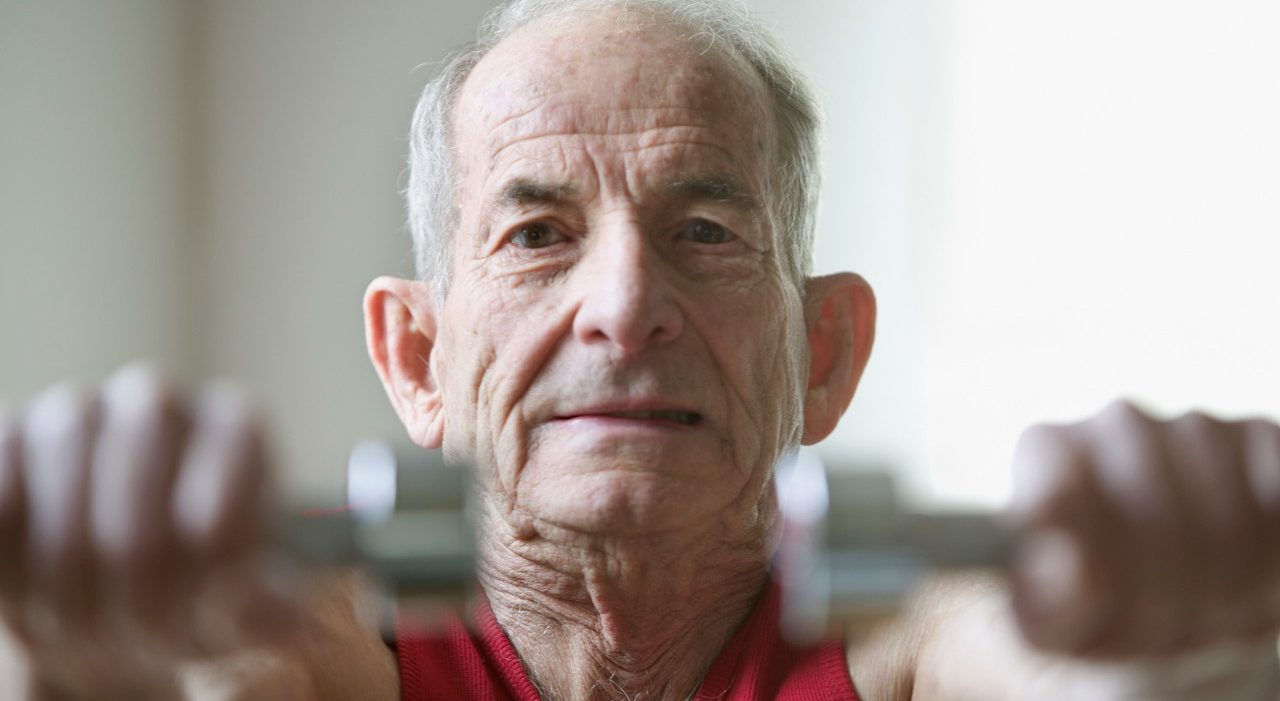Exercise Slows Aging

Experts continue to find even small amounts of exercise have real health benefits.
Exercise helps ward off life’s worst ills — heart attack, stroke, even cancer. That’s why experts urge us to get a minimum of 2.5 hours of moderate-intensity activity each week, along with two sessions of strength training.
But can exercise slow, even reverse, aging itself? That’s a question researchers are beginning to delve into — and their answers are intriguing.
In one 2011 study, researchers worked with mice genetically engineered to age quickly. One group of the mice was left to mature without intervention, while another group ran on a treadmill for 45 minutes three times a week. A year later — about a third of a healthy mouse’s lifespan — the mice who hadn’t exercised had all died. Yet those who logged time on the treadmill were still in perfect health, despite the aging mutation. While their non-exercising companions faded away — losing brain and muscle mass, even their hair — the exercising mice kept all those, along with their reproductive capacity. Those remarkable results may transfer to humans.
Over a lifetime, as our cells divide and replicate, caps called telomeres protect the DNA on the end of each chromosome, making sure our DNA is replicated exactly. That’s important, because mutations in DNA can lead to diseases like cancer. With each division, however, the telomeres shorten, until finally the cell can no longer replicate DNA safely. Then it either stops dividing or dies.
As a result, telomere length is associated with aging. In a landmark 2004 study, women living under high-stress conditions (all were caregivers for a chronically ill child) were found to have telomeres that were the equivalent of 9 to 17 years shorter than those of women who had given birth to a healthy child. In other words, at the cellular level, the caregiver women were a full decade or two older than their less-stressed peers.
Yet here’s the kicker: exercise, studies suggest, can help maintain telomere length. Telomeres are protected by an enzyme called telomerase, which adds DNA to dividing chromosomes, regardless of their length. In 2009, researchers found mice that exercised for just three weeks increased their production of telomerase, stabilizing their telomeres and reducing cell death.
The same researchers then looked at young (about 20 years old) and middle-aged (about 51 years old) endurance runners. The results were similar to the mice: the athletes had higher levels of telomerase and lower levels of cell death — and, for the older athletes, longer telomeres — than non-exercising peers of the same age. “This is direct evidence of an anti-aging effect of physical exercise,” the study’s lead author reported.
Exercise affects more than the body and its cells. Increasing evidence suggests exercise also turns back the clock on the mind — but it doesn’t take a lot. One recent study showed improved memory in adults aged 57 to 75 who exercised for an hour, three times a week, for just three months.
Indeed, experts continue to find even small amounts of exercise have real health benefits. In 2014, researchers analyzed the exercise habits of more than 55,000 people between the ages of 18 and 100. Those who ran at all, even just an hour or so a week, were 30 percent less likely to die overall, and 45 percent less likely to die from cardiovascular disease, than those who didn’t exercise — and added three years to their life at the same time. That means running just 5 to 10 minutes a day provided the same longevity benefits as running more than three hours a week.
If you’re less active and you’d like to start or increase your exercise, check with your doctor first — he or she can help you find specific types of activity that work for you and tell you which may not be safe based on your health conditions.
Then, take it one step at a time. Walking, swimming, or any other sport you enjoy are all a good place to start. For example, try walking for just 10 minutes a day and work up from there, adding 5 or minutes every week or two until you reach recommended guidelines (2.5 hours of moderate activity, or 75 minutes of vigorous activity, each week). Soon, you’ll be feeling fitter — and you may just be growing younger, too.
Updated:
April 07, 2020
Reviewed By:
Christopher Nystuen, MD, MBA, and Janet O’Dell, RN